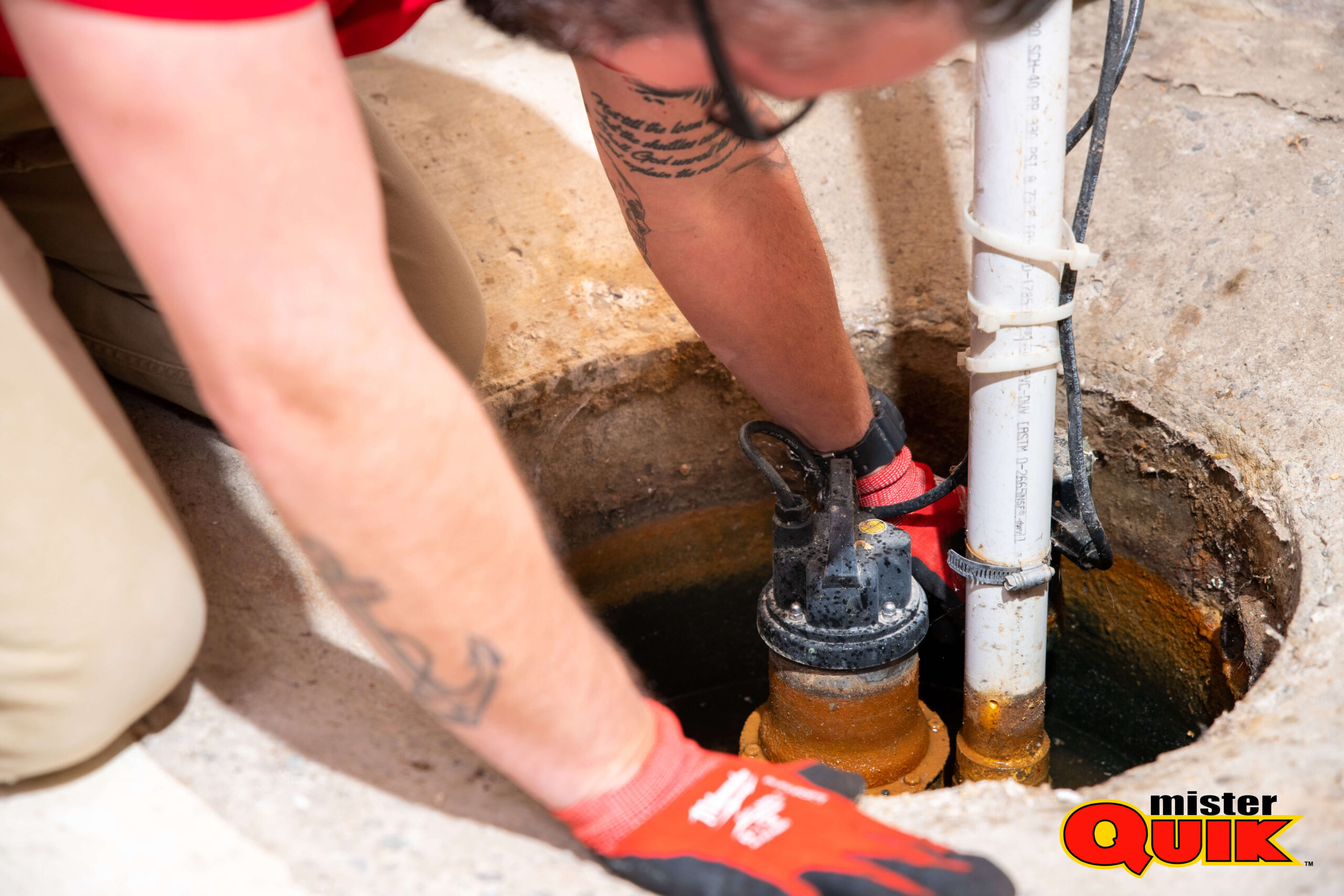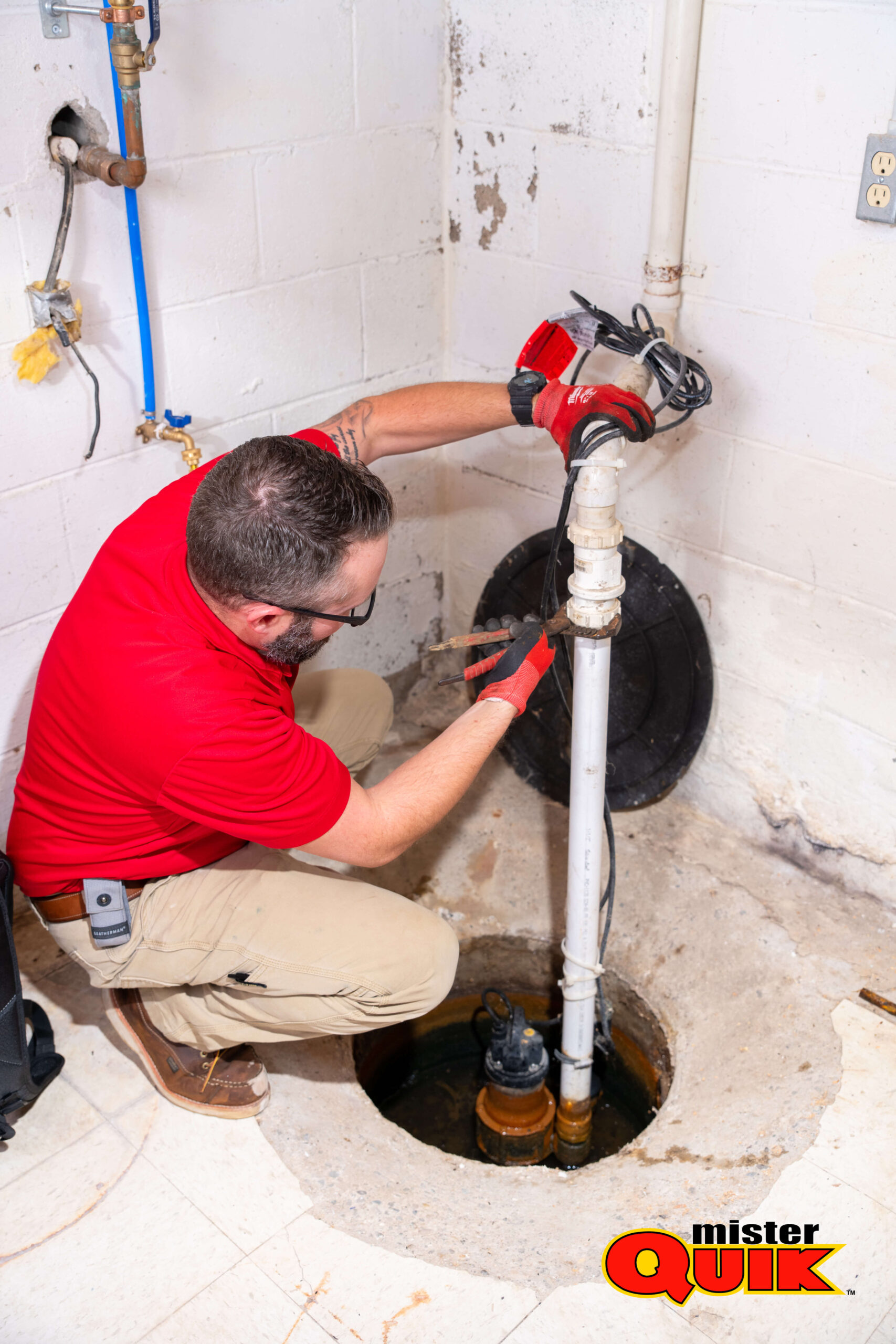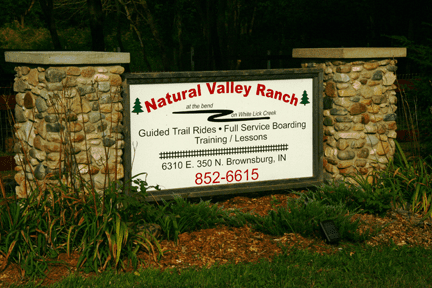Flooding Basement Brownsburg

Flooding Basement Brownsburg
Experiencing a flooding basement can be a nightmare, but understanding the steps involved in repairing it can provide much-needed relief. From assessing the damage to implementing effective solutions, addressing a flooded basement requires careful planning and prompt action. Let’s explore the essential steps and considerations for flooding basement repair:
Assessment: Begin by assessing the extent of the damage caused by the flooding. Identify areas of standing water, structural damage, and potential sources of water entry.
- Check for signs of water damage on walls, floors, and belongings.
- Determine the cause of the flooding, whether it’s heavy rainfall, a burst pipe, or poor drainage.
Water Removal: The first step in repairing a flooded basement is to remove the standing water as quickly as possible to prevent further damage and mold growth.
- Use pumps, wet vacuums, or professional water extraction services to remove the water.
- Thoroughly dry the area using fans, dehumidifiers, and ventilation to prevent mold and mildew.
Damage Mitigation: Once the water is removed, focus on mitigating any structural or cosmetic damage to the basement.
- Remove damaged drywall, insulation, carpeting, and furniture to prevent mold growth and structural instability.
- Disinfect and sanitize the affected areas to eliminate bacteria and prevent health hazards.
Waterproofing: Implement waterproofing measures to prevent future flooding and protect your basement from water damage.
- Seal cracks and gaps in the foundation walls and floors to prevent water intrusion.
- Install a sump pump and drainage system to redirect water away from the foundation during heavy rainfall.
Preventative Maintenance: Take proactive steps to prevent future flooding and ensure the long-term stability of your basement.
- Regularly inspect and maintain your plumbing, including pipes, valves, and fixtures, to prevent leaks and water damage.
- Keep gutters and downspouts clean and free of debris to ensure proper drainage away from your home’s foundation.
In conclusion, repairing a flooding basement requires a systematic approach that includes assessing the damage, removing standing water, mitigating damage, implementing waterproofing measures, and practicing preventative maintenance. Trust Mister Quik Home Services in Brownsburg to provide expert guidance and reliable solutions tailored to your specific needs, ensuring your basement is restored to a safe and dry condition.
Moen Delta Faucets Kohler American Standard Toto Mansfield Plumbing Price Pfister Peerless Lochinvar Rinnai Navien Grohe Speakman Gerber Whirlpool Easywater AO Smith Rheem Bradford White Culligan Kinetico Sterling Brizo Gastite Zoeller Glentronics Zurn Grundfos Pumps Blanco Bocchi Bradley Company Brasscraft Manufacturing Company Kerox, Ltd. Dornbracht Americas Inc. Falcon Water Technologies, LLC Fisher Manufacturing Company Fluidmaster, Inc. Hansgrohe, Inc. Haws Corporation LAUFEN Schweiz AG Lavelle Industries, Inc. LIXIL LSP Products Group LLC Marcone Plumbing Masco Corporation Neoperl, Inc. Reliance Worldwide Corporation Sloan Valve Company Sprite Industries T&S Brass and Bronze Works, Inc. Uponor Viega LLC Water Pik, Inc. WCM Industries, Inc.
Axor Decolav Dreamline Showers DXV Fairmont Design Fortis Franke Geberit Plumbing Ginger Graff HydroSystems Infinity Drains In-Sink-Erator Jacuzzi James Martin LinkaSink MTI Native Trails Newport Brass PROFLO Rohl Signature Hardware Strasser Swanstone Thompson Traders Watermark Zucchetti Alfi ANZZI Altair AquaPure Avanity Avano Azzuri Bella CORE Bemis Brondell CRAFT + MAIN California Faucets Chicago Faucets Clarke Cutler Kitchen and Bath Duravit EAGO Eccotemp Eemax Fresca Giagni Houzer Jones Stephens Kaldewei Kingston BrassKraus Liberty Pumps Little Giant MediTub Nameeks OVE Decors Pulse Purewater Baths Sagehill Designs Saniflo Stiebel Eltron Swiss Madison Symmons Ultra Faucets VIGO WS Bath Collections Waste King Watts Whitehaus
Flooding Basement Solutions
Are you dealing with a flooding basement and seeking effective solutions? Understanding the causes and available remedies is crucial for protecting your home. Here’s a comprehensive guide to help you address flooding basement issues:
Determine the source of the water intrusion, whether it’s from surface water, groundwater, or plumbing leaks.
Ensure proper grading around the foundation to direct water away from the basement. Install gutter extensions and downspouts to channel water away from the house.
Seal any cracks or gaps in the foundation walls with waterproof sealant to prevent water from seeping in.
Interior drainage systems like French drains or sump pump systems can effectively collect and remove water that enters the basement.
Consider waterproofing solutions such as exterior waterproofing membranes or interior waterproof coatings to protect the foundation walls from moisture intrusion.
Regularly clean and maintain gutters and downspouts to prevent clogs and ensure proper water flow away from the house.
Repair any plumbing leaks or damaged pipes to prevent water from entering the basement through plumbing fixtures or pipes.
Install covers on window wells to prevent rainwater from accumulating and seeping through basement windows.
Elevate stored belongings and electrical appliances off the basement floor to minimize damage in case of flooding.
Adjust the landscaping around your home to promote better drainage away from the foundation, using features like swales or berms.
By implementing these flooding basement solutions, you can effectively mitigate water damage and protect your home from future flooding incidents. Trust Mister Quik Home Services in Brownsburg to provide expert guidance and solutions for your basement waterproofing needs.
In conclusion, addressing flooding basement issues requires a combination of preventive measures and proactive solutions. With the right approach and professional assistance, you can safeguard your home and enjoy a dry, comfortable basement space.
The primary cause of basement flooding is typically attributed to water infiltration through cracks in the foundation walls or floor, exacerbated by poor drainage systems around the home. Heavy rainfall, melting snow, or improper grading can lead to excess water accumulation, putting pressure on basement walls and causing leaks. Inadequate sealing and waterproofing of basements also contribute significantly to the risk of flooding, allowing water to seep in and accumulate over time, resulting in potential damage to property and infrastructure. Proper maintenance, including regular inspection and repairs, is essential in preventing basement flooding and safeguarding against its costly consequenc
Basement flooding poses significant risks to both property and personal safety. Water intrusion can cause structural damage to the foundation and walls, leading to costly repairs. Additionally, it creates a breeding ground for mold and mildew, which can compromise indoor air quality and trigger health issues. Moreover, flooded basements can damage valuables stored in the area and disrupt essential utilities like electricity and heating systems, further complicating recovery efforts. Mitigation measures such as proper drainage and waterproofing are crucial to minimize these risks and safeguard against potential damage.
There could be several reasons why you suddenly have no running water, including pipe leaks, frozen pipes, water main breaks, water supply issues, or problems with the water pump or pressure tank. A plumber can help diagnose and resolve the issue.
While basements are susceptible to flooding, not all basements will inevitably experience this issue. Factors such as geographical location, climate, topography, construction quality, and maintenance practices significantly influence the likelihood of flooding. Proper waterproofing, drainage systems, and regular inspections can mitigate the risk of basement flooding, ensuring a dry and functional space for homeowners. Additionally, prompt action in addressing any signs of water intrusion can prevent minor issues from escalating into major flooding incidents.
To prevent water from infiltrating your basement, start by ensuring proper drainage around your home’s foundation, including cleaning gutters and downspouts regularly. Additionally, consider installing a sump pump and a waterproofing membrane on the exterior walls. Inspect and repair any cracks in the foundation promptly, and consider landscaping solutions such as grading to divert water away from the house. Finally, installing window well covers and ensuring proper ventilation can further help in keeping your basement dry and free from water damage.
Basement Flooded Who to Call
Experiencing a flooded basement can be overwhelming, but knowing who to call for help is crucial to mitigate damage and restore your home. When your basement floods, consider these key points to determine who to call for assistance:


These specialized companies have the expertise, equipment, and experience to handle basement flooding effectively.
Plumbers can assess the situation, identify the source of the flooding, and repair any plumbing issues contributing to the problem.
Contact your insurance company to understand your coverage and initiate the claims process for basement flood damage.
If the flooding is due to a sewer backup or municipal water issue, contact the local water department for assistance.
In some cases, you may opt to rent water extraction and drying equipment to begin mitigating the damage before professional help arrives.
Reach out to local emergency services or community organizations for additional support and guidance during a basement flooding emergency.
Prioritize safety by turning off electricity to the affected area, avoiding contact with standing water, and wearing protective gear when inspecting or cleaning up.
In conclusion, when your basement floods, prompt action is essential to minimize damage and restore your home to its pre-flood condition. Trust Mister Quik Home Services in Brownsburg to provide expert assistance and reliable solutions for basement flood cleanup and restoration.
Flooding in Basement Causes
Experiencing flooding in your basement can be distressing, but understanding the potential causes is the first step toward effective prevention and mitigation. Several factors can contribute to basement flooding, ranging from external sources to internal plumbing issues. Here’s a detailed look at some common causes:


Inadequate or blocked exterior drainage systems, such as gutters, downspouts, or French drains, can allow water to accumulate around the foundation and seep into the basement.


Cracks in the foundation walls or floors provide pathways for water infiltration, especially during heavy rainfall or when the water table is high.









A malfunctioning or overwhelmed sump pump can fail to remove excess water from the basement, leading to flooding.









Improper grading around the home or landscaping features that direct water toward the foundation can increase the risk of basement flooding.









High groundwater levels or hydrostatic pressure can force water through basement walls or floors, especially in areas with poor soil drainage.









Sewer lines can become clogged or overwhelmed during heavy rains, causing sewage to back up into basements through floor drains or plumbing fixtures.









Frozen or deteriorated pipes within the home’s plumbing system can rupture, releasing a significant amount of water into the basement.









Malfunctioning appliances such as water heaters, washing machines, or dishwashers can leak or overflow, leading to water damage in the basement.









Inadequately designed or maintained window wells can allow water to enter the basement through basement windows, especially if not properly sealed.









Excessive water pressure in the soil surrounding the foundation can push water through cracks or porous concrete into the basement.
By understanding these potential causes of basement flooding, homeowners can take proactive measures to prevent water damage and protect their property. Trust Mister Quik Home Services in Brownsburg to provide expert guidance and solutions for addressing basement flooding issues, ensuring a dry and safe home environment.
Flooded Basement Pump
Dealing with a flooded basement can be overwhelming, but understanding the role of a sump pump is crucial for effective water removal and prevention of further damage. A flooded basement pump, commonly known as a sump pump, is a vital component of your home’s waterproofing system, designed to remove excess water from your basement or crawl space. Here’s everything you need to know about flooded basement pumps:
- Functionality: Sump pumps are installed in a pit or basin within the lowest point of your basement or crawl space to collect groundwater and excess water. When water levels rise, the pump activates, removing the water and directing it away from your home’s foundation.
- Types of Sump Pumps: There are two main types of sump pumps: submersible and pedestal. Submersible pumps are submerged in water and operate quietly, while pedestal pumps are installed above the water level and are easier to maintain.
- Backup Systems: It’s essential to have a backup power source for your sump pump, such as a battery backup or generator, to ensure it continues working during power outages, which often occur during heavy storms.
- Maintenance: Regular maintenance is key to ensuring your sump pump functions properly when needed. This includes checking for debris in the pit, testing the pump regularly, and ensuring the discharge pipe is clear and directing water away from your home.
- Installation: Proper installation is critical for the effectiveness of your sump pump. It should be installed by a professional plumber or waterproofing specialist to ensure it’s positioned correctly and connected to a suitable drainage system.
In conclusion, understanding the purpose and function of a flooded basement pump, also known as a sump pump, is essential for protecting your home from water damage. Trust Mister Quik Home Services in Brownsburg to provide expert advice, installation, and maintenance for your sump pump needs, ensuring your basement remains dry and your home stays safe from flooding.
Causes of Leaks in Basement
Experiencing leaks in your basement can be concerning, but understanding the potential causes can help you address the issue effectively. Several factors can contribute to basement leaks, ranging from structural issues to external elements. Here’s a detailed overview to help you identify and resolve the problem:
Settlement or shifting of the foundation can lead to cracks, allowing water to seep into the basement.
Inadequate slope around the foundation or clogged gutters and downspouts can result in water pooling near the basement walls.
A malfunctioning sump pump or lack of proper maintenance can lead to water accumulation in the basement during heavy rain or snowmelt.
Buildup of hydrostatic pressure from groundwater can force water through cracks or weak points in the foundation.
Improperly installed or poorly maintained window wells can allow water to enter the basement through windows during rainfall.
Porous concrete or masonry walls can absorb moisture from the surrounding soil, leading to dampness or leaks.
Leaking pipes or plumbing fixtures in the basement can introduce water into the space, causing damage over time.
Surface runoff from adjacent properties or nearby hills can flow toward the basement, especially if proper drainage measures are lacking.
High humidity levels in the basement can result in condensation forming on walls, floors, or pipes, creating moisture issues.
Settlement or shifting of the soil beneath the basement floor can cause cracks in the slab, allowing water to penetrate.
Understanding these potential causes of basement leaks can empower homeowners to take proactive measures to prevent water damage and maintain a dry, healthy basement environment. Trust Mister Quik Home Services in Brownsburg to provide expert assistance in diagnosing and resolving basement leaks, safeguarding your home from water-related issues.
Troubleshoot Checklist:
- Identify areas of standing water, structural damage, and potential sources of water entry.
- Check for signs of water damage on walls, floors, and belongings.
- Use pumps, wet vacuums, or professional water extraction services to remove the water.
- Thoroughly dry the area using fans, dehumidifiers, and ventilation.
- Remove damaged drywall, insulation, carpeting, and furniture.
- Disinfect and sanitize the affected areas to eliminate bacteria and prevent health hazards.
- Seal cracks and gaps in the foundation walls and floors.
- Install a sump pump and drainage system to redirect water away from the foundation.
- Regularly inspect and maintain plumbing, including pipes, valves, and fixtures.
- Keep gutters and downspouts clean and free of debris to ensure proper drainage.










